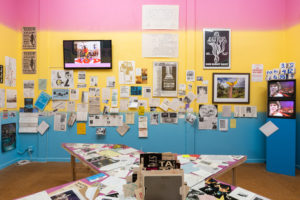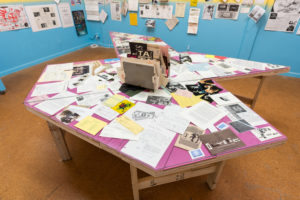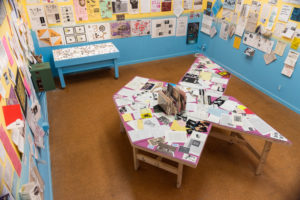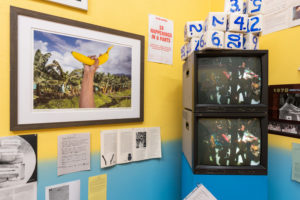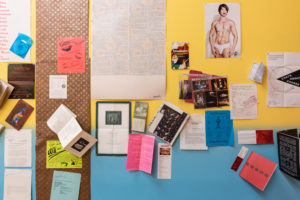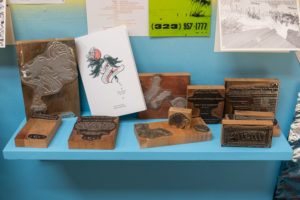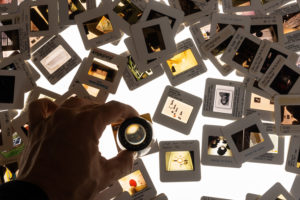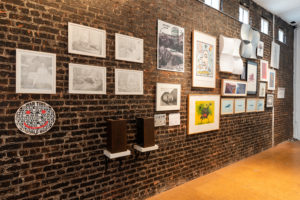
- This event has passed.
The Archival Impulse: 40 Years at LACE
March 15, 2018 - December 31, 2019
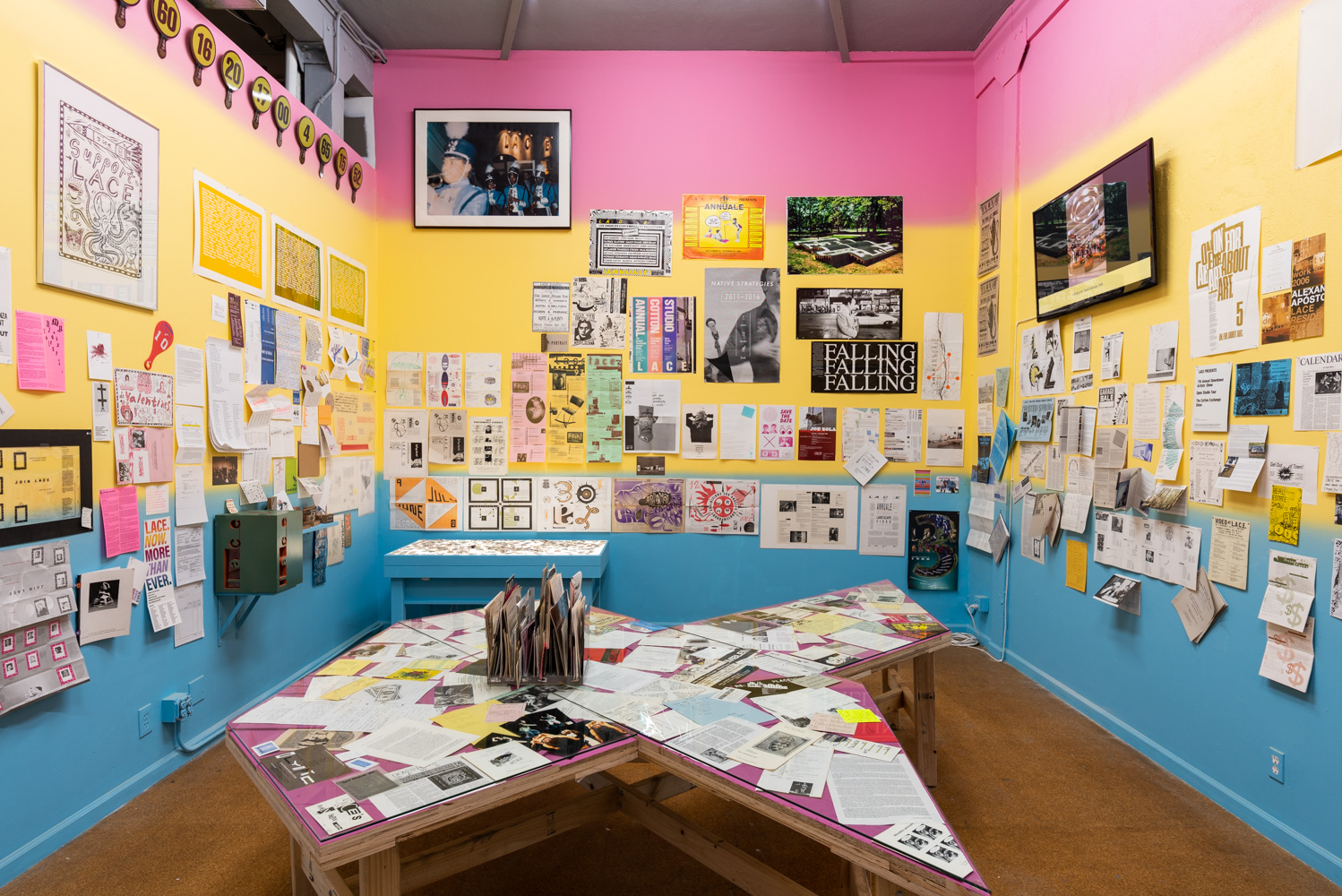
Curated by Matias Viegener with Exhibition Design by Jeff Cain
March 15, 2018- Ongoing
The Archival Impulse: 40 Years at LACE is a Project Room installation that pulls from material found in LACE’s archive that either highlights or disputes our conceptions of LACE’s history. Accumulated over 40 years, it has no organizing system beyond what LACE staff considered worth saving. It enfolds many stories about the space, less woven than overlaid and amassed. This exhibition is a conversation about our expectations of the archive and the things we expect to find, contrasted against the material that does find its way in. This is particularly poignant in the case of an archive that accumulates rather than is curated over time, yielding space for a kind of counter-curation.
Includes video works curated by Anne Bray featuring: Reza Abdoh, Skip Arnold, Fu-Ding Cheng, Jeanne Finley, Doug Henry, Cheng-Sim Lim, Susan Mogul, Eric Saks, Jim Shaw, and more.
Archives are always bigger than us, bigger than the image we have of them, more than we can take in. Archives cannot be summarized nor adequately represented. Optimally, archives never end: everything is archivable, though not everything enters the archive, and unexpected and decontextualized things appear regularly. They’re a skeleton without flesh, a way of understanding an organism by inference. They give us tissue samples, lab results and bones, but we must supply the context, the feeling and the experience. We are as necessary to the archive as it is to us.
LACE’s archive is dazzling to the same degree that the history of LACE is dazzling, but it is also full of holes. A significant anniversary provides the occasion to examine the archive, as had been done for LACE’s 10th year anniversary, then 20th, 25th, and 30th. The Getty’s acquisition of LACE’s archive on its 40th anniversary acknowledges its significance and promises us a fuller indexing and understanding of the collection. What began as an archive without an archivist, an archive with an impulse, will become a fully activated archive.
This exhibition encapsulates several different narratives, from the energetic first years to the ambitious first decade, then a second decade of self awareness about a growing history and legacy, capped by the conservative war on the NEA that catapulted LACE and alternative art organizations into the national spotlight. From the beginning, LACE’s programming addressed social justice, diversity, and the inclusion of art-world outsiders. Likewise the topics of labor, economic justice, and housing appear consistently, often in relationship to the urban site of Los Angeles, Hollywood, California, and the border with Mexico. This reflects the role of artists in interrogating the city and creating a new, conscious, and political public.
A long history of feminist and queer work is to be found here, as well as representation of California’s diversity including Latinx, Asian, and African-American artists. This community focus is joined to LACE’s political commitment by an allegiance to critical art making which ranges from institutional critique to issue-based exhibitions on ever-relevant topics such as war, surveillance, and democracy. The diversity of LACE is also formal, as one of the first spaces to place film, video, music, installation, performance and dance alongside traditional fine arts — cutting edge for its time and now widely prevalent. The innovative design elements of LACE’s calendars, programs and publicity work in harmony with its mission to promote pioneering work.
A final strain of this exhibition is a kind of financial realism, a look at the financial structure of independent artist-run spaces of which LACE was an early example. Their survival can be precarious, depending more on membership, benefit auctions, and commissioned editions than on government or corporate sponsorships. LACE’s expenses, its fundraising, and its costs are given equal attention to its programming and commitments. The various appeals for support are as innovative as the actual work seen here; they cannot be separated. In the hallway outside this room you will find a surprising selection of LACE editions, which focus our attention on the artists who support LACE and offer the audience means to do so as well.
Shown here is less than 1% of 1% of 1% of the actual archive, which itself is only partially organized. It contains a percentage of mysteries, items we know came from LACE, but without dates, or even artists’ names. The challenge they present is reflected in this exhibition. You are encouraged to make your own way here, especially in the interplay of the items available for perusal, from brochures to publications and slides, in juxtaposition to material fixed on the wall or under glass. More information on individual items can be searched on LACE’s website. Many of the original materials in this room are multiples, so if you’re interested in keeping something, just tell us. The archival impulse is brought to life in these acts.
Using material repurposed from LACE’s attic and archive, this exhibition was designed by Jeff Cain, and inspired by the influential design of LA’s Colby Poster printers whose aesthetic influenced both art and politics in Southern California. Anne Bray curated the video selection from significant work screened at LACE over the years. Many LACE interns participated in the search and retrieval of seemingly lost items, and we celebrate them here.
Matias Viegener
March 2018
Click here to read about our feature in Hyperallergic.
